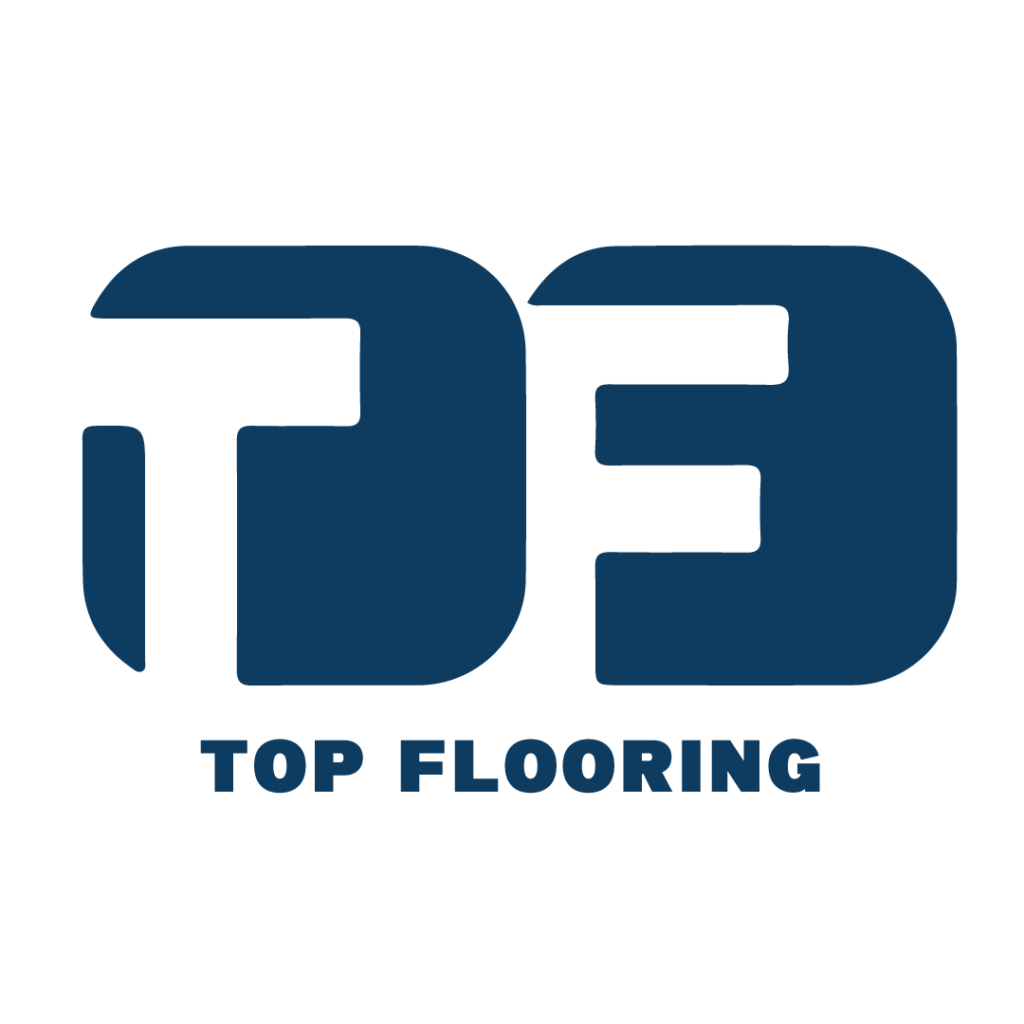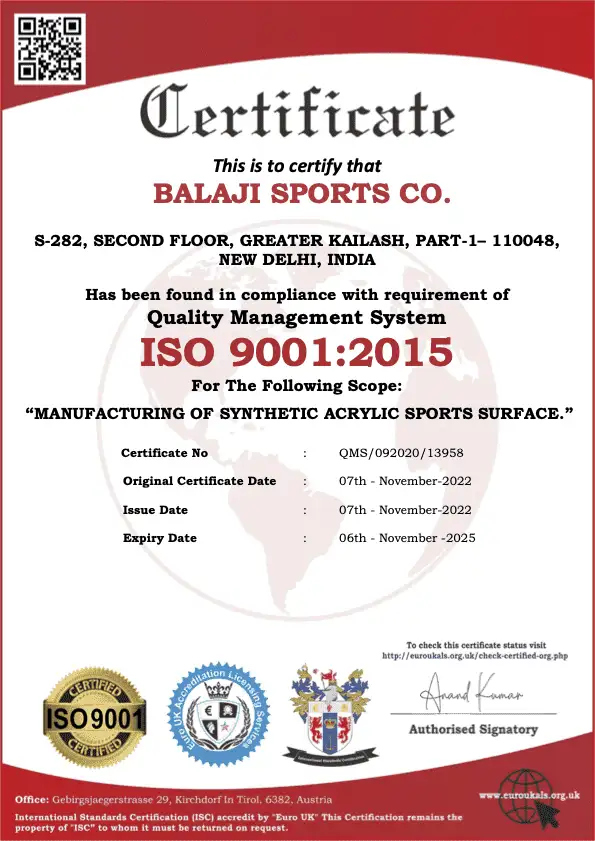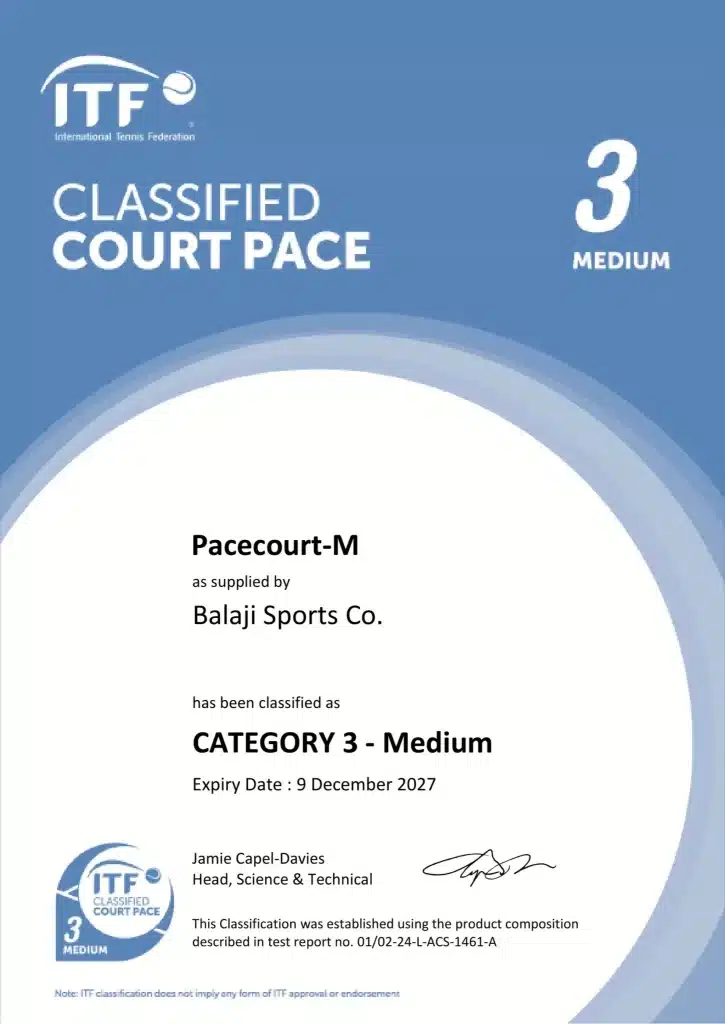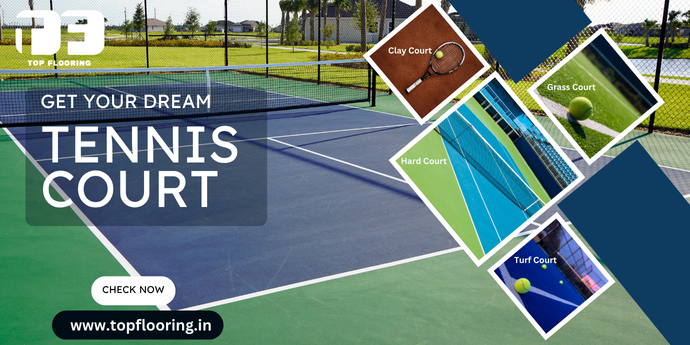
Tennis courts come in many surfaces, each with its own speed, bounce and player movement. The most common are grass, clay and hard surfaces, each a different experience. As a player, coach, facility manager or court builder, you need to understand these differences to create the best playing environment. From fast grass courts to high-bounce clay and consistent hard courts, each surface affects gameplay, maintenance and durability differently. In this blog, Top Flooring takes a deep dive into the types of tennis court surfaces, the pros and cons of each and the rise of synthetic acrylic flooring and modular options. Whether building a residential tennis court flooring or a professional facility, this guide will help you make informed decisions based on performance needs, location and long-term maintenance.
Evolution of Tennis Court Surfaces
Tennis began in France as “jeu de paume,” a play on indoor wooden surfaces with the hand rather than racquets. As the sport made its way around Europe, particularly in England during the 19th century, grass courts became standard for outdoor play, and we came to have the term “lawn tennis.” The grass was quick but demanded a lot of maintenance, so it wasn’t used very often.
To lower the tennis court cost and maintenance of the game, the French and South Americans introduced clay courts, which are slower and more bouncy. Asphalt tennis court construction and concrete with acrylic coating surfaced courts became popular in clubs, schools and tournaments due to the ease of maintenance and durability. Modern technology has revealed new surfaces for synthetic tennis courts, such as synthetic acrylic floor coverings, which offer an excellent compromise between performance, durability and weather resistance. These have gained immense popularity in nations such as those where the climate requires rugged and low-maintenance options. The history of the development of different tennis surfaces mirrors the global spread of the sport and the requirement for flexible, high-performance court systems.
Why Types of Tennis Court Surfaces Matter?
The tennis floor types affects the game, maintenance and player safety. Each surface has its characteristics that affect how the ball behaves and how players move during a match.
- Speed is one of the most obvious: Grass courts are the fastest; serve-and-volley players love them. Clay courts slow the game down and favor baseline players. Tennis hard court material (acrylic or asphalt) are a balanced medium speed; most competitive and recreational players love them.
- Bounce also varies by surface: Clay courts have a high, predictable bounce, which is great for long rallies. Grass courts have a low, often uneven bounce, requiring quick reflexes. Hard and synthetic courts have medium bounce and all-around play.
- Maintenance needs are vastly different: Grass and clay need regular watering, rolling or mowing—high maintenance. Hard courts and synthetic acrylic surfaces are low maintenance and weather resistant.
For player comfort and injury prevention, cushioned and synthetic surfaces have better shock absorption; that’s why they are the preferred choice in modern tennis court construction—especially for long-term or high-usage courts.
What are The 4 Main Tennis Court Types?
The main 4 types of tennis court surfaces are – hard court, clay court, grass court, and synthetic turf, which are as follows:-
a. Hard Court (Acrylic or Asphalt)
Tennis hard court surface material are made with asphalt or concrete and then topped with synthetic acrylic tennis court flooring to give texture, grip and color. They are used in schools, clubs, and international tournaments because they are durable and low maintenance. Medium speed and consistent bounce—hard courts suit all playing styles. Low maintenance and weather resistant, they are a popular choice. The US Open is played entirely on hard courts.
b. Clay Court
Clay courts are made with crushed shale, stone or brick and are popular in Europe and South America. They slow down the game and give a higher bounce, which is good for baseline players who love long rallies. However, clay courts require regular maintenance, watering, rolling, and leveling to be playable. Despite the maintenance, they are good for certain playing styles. The French Open at Roland Garros is the most famous tournament played on red clay courts.
c. Grass Court
Grass courts are the traditional surface of lawn tennis court and the fastest form of the game, with a low, frequently unpredictable bounce. The soft surface is easy on the joints but demands rigorous maintenance such as mowing, watering and annual repairs. Because of these maintenance demands, grass courts are no longer common in public and club environments. The most prestigious grass court tournament is Wimbledon, and the team preserves this surface for historical and aesthetic purposes.
d. Carpet or Synthetic Turf Court
Synthetic turf or carpet courts are commonly located in indoor facilities or temporary installations. They employ prefabricated rolls of synthetic turf or tennis court material, the soft surfaces being kinder on the joints. With low maintenance and moderate speed and bounce, they are convenient for training and recreational use. Underused in professional tournaments regulated by ATP or WTA, carpet courts find favor in schools and indoor sports centers for their adaptability and ease of installation.
Emerging and Alternative Types of Tennis Court Surfaces
Synthetic Acrylic Courts
Synthetic acrylic tennis court flooring are the most in-demand in India and other regions with warm climates because they are weatherproof and long-lasting. The courts are installed over an asphalt or concrete base and topped with a UV-resistant, slip-proof synthetic acrylic surface. They can be made in different colors and textures and used for residential and commercial property purposes. Low upkeep and excellent playability render synthetic acrylic courts the option of choice for contemporary tennis court construction and long-lasting performance.
Modular Tile Systems
Modular tile systems consist of easy-to-install, remove and transfer interlocking tiles, making them a versatile option for any sporting environment. Intended for multisport use, these tiles have a self-draining configuration and slip-resistant coating in order to provide safe and effective performance. Easy maintenance makes them suitable for schools, recreation centres and community clubs. For temporary or permanent courts, modular tiles are the convenient option where flexibility, mobility and all-weather use are priorities.
Cushioned Systems
Cushioning tennis court systems contain a shock-absorbent layer under the surface acrylic layer that minimizes stress and impact on joints while playing. The surfaces are ideal for seniors and children, as well as comfort and injury-protective players. Installed in schools, academies and high-end sports centers, cushioning courts provide reliable playability and overall customer satisfaction. Safety with functionality is an excellent investment in long-term health and satisfaction on the court.
How Tennis Court Surface Affects Gameplay?
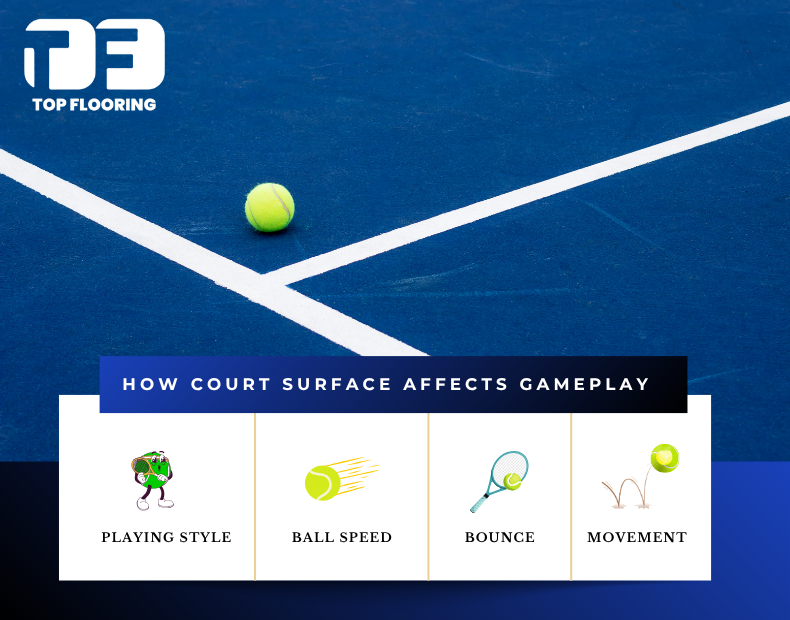
- Ball Speed: Grass is the fastest, where the ball skids. Clay slows the ball down, longer rallies. Hard is medium, good for most styles.
- Bounce: Clay is higher and more even, good for baseliners. Grass is low and variable, good for net players. Hard is medium and even.
- Movement: Sliding is easier on clay; recovery is faster. Hard courts are sudden stops that jar your joints. Grass is slippery; you need precise footwork.
- Injury risk: Cushion coat and synthetic surfaces absorb shock to reduce joint stress. Hard courts are harder on knees and ankles; clay is softer.
- Playing Style: Clay is for defensive, endurance players. Grass is for aggressive net players. Hard is for balanced styles for offense and defense.
Tennis Court Surface Comparison Table
| Surface Type | Speed | Bounce | Maintenance | Cost | Durability |
| Hard Court | Medium | Medium | Low | Medium | High |
| Clay Court | Slow | High | High | Medium | Medium |
| Grass Court | Fast | Low | Very High | High | Low |
| Synthetic Acrylic | Medium | Medium | Low | Medium | High |
| Modular Tiles | Medium | Medium | Low | High | High |
How to Choose The Right Types of Tennis Court Flooring?
- Climate: What’s the weather like in your area? Synthetic acrylic tennis courts are super durable, perform well in hot, humid, or rainy conditions and withstand UV and moisture. Grass courts don’t do well in wet or extreme weather. Clay courts require water management and are best for moderate climates.
- Budget: Hard court tennis surface and synthetic acrylic systems are affordable, have great longevity, and are low maintenance. Clay and grass courts are more expensive to maintain. Modular tile systems have a higher upfront cost but more flexibility and lower long-term maintenance.
- Usage Frequency: For high-traffic courts like community centers or clubs, durable modular tiles or synthetic acrylic surfaces can take the wear and tear. Grass courts are not suitable for high-traffic use as they deteriorate quickly.
- Player Age and Level: Cushioned tennis courts reduce joint stress and are perfect for older players, beginners or those who want extra comfort. Professional venues usually prefer hard or clay courts, depending on the tournament requirements.
- Purpose: Is the court for private use, public facilities or professional tournaments? Each has different surface requirements to optimize player experience and tennis court life.
Conclusion
There are four types of tennis court surfaces: Grass, Clay, Hard and Artificial Grass. Grass courts are the traditional lawn tennis court surface, but modern innovations have made it possible to introduce a new level of tennis. But I have played with a new level of tennis. Each surface affects gameplay, safety and maintenance costs differently.
Whether building a new court or upgrading an existing one, understanding the difference between tennis court surfaces is key. Synthetic tennis court material is the best option for the Indian climate; it is long-lasting, customizable and safe for play areas.
Consult with tennis court builders like Top Flooring for guidance on choosing and installing the best tennis court surface for you.
Frequently Asked Questions
There are four types of tennis courts: grass, clay, hard courts (acrylic or asphalt) and carpet or synthetic turf courts.
Hard courts and synthetic acrylic surfaces are best for beginners as they have consistent bounce and moderate speed.
Yes, cushioned court systems reduce joint stress and impact and are good for seniors and high-use facilities.
Grass courts need the most maintenance – mowing, watering and repair. Clay courts also need frequent rolling and watering.
Yes, synthetic acrylic courts are durable, weather-resistant and popular in hot climates like India.
A tennis hard court is made of asphalt or concrete covered with acrylic layers for bounce and durability.
The four tennis court surfaces are hard, clay, grass, and carpet/artificial.
Grass courts are the fastest surface in tennis, producing low bounce and quick play.
Tennis courts are made from acrylic, clay, grass, or synthetic materials depending on the surface type.
